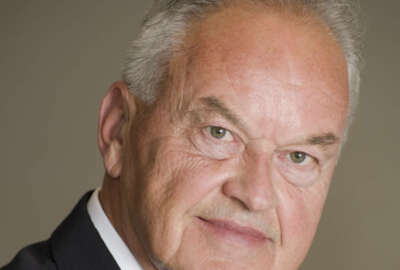
Can two selfies live as cheaply as a self-plus-one selfie?
It stands to reason that premiums in a self-plus-one health plan would be lower than family plan premiums, but Senior Correspondent Mike Causey says not always.
The self-plus-one (S+1) health plans introduced for the first time this year disappointed lots of couples, active and retired, who thought they would save big bucks over the traditional family plan.
The fact that experts — and the Office of Personnel Management — consistently said the S+1 plans probably wouldn’t be that much cheaper was lost on many people. The experts said the key to premiums would be the age and health of people who switched from a traditional self-plus-family plan into the new model S+1. If lots of young healthy couples moved into the new two-person plans, premiums would go up relatively slowly. But if lots of older, less healthy couples made the switch premiums would rise.
So, is it time for people who switched to a S+1 plan to return to the self-and-family plan fold? Short answer: Maybe.
Premiums for 2017 health plans are out and available. They show that, in many cases, the dollar difference in premiums for family coverage differ little from premiums in the S+1 plans. In some cases, couples should consider having separate coverage under two separate self-only plans rather than both enrolling in a S+1 plan, according to Walton Francis. He’s author of Consumer Checkbook’s Guide to Health Plans for Federal Employees & Annuitants. For decades, it’s been the go-to bible for active and retire feds who have a bewildering number of good-to-excellent health plans to chose from each year.
Most people don’t change plans, which Francis says can cost an individual $1,000 to $2,000 in higher premiums and deductibles. It’s money they could save, he said, if they’d do a little comparison shopping between now and Dec. 12, when is the end of the open enrollment period.
So what about switching back to a family plan? Francis said that “for a husband and wife who are both federal annuitants and who have no dependent children, it is possible to save on premium costs by enrolling separately as self-only rather than together as a self-plus-one.” He said the premiums for two self-only enrollments are often less than a S+1 plan.
Kaiser’s standard option plan, highly rated by the Checkbook guide, has a premium of $1,450 per year for self-only coverage, whereas its S+1 plan will cost $3,400 next year. That’s the premium workers and retirees will pay after the government covers the lion’s share (about 72 percent) of the total premium. Blue Cross-Blue Shield’s popular basic plan’s self-only premium is $1,850 compared to $4,280 for the S+1 plan.
The downside to switching from self-only to self-plus-one because “each person will have to meet a separate catastrophic limit rather than the single limit that applies to S+1 plans. The catastrophic limit is the full amount you will have to pay next year before the insurance covers the rest,” according to Francis.
If one spouse is still working in government and the other is a retired fed “should almost NEVER use two self-only enrollments,” he said. That’s because it is always less expensive for the employed fed to enroll in in S+1 or a family option, because the working spouse gets the benefit of premium conversion. PC, in this case, permits workers (but not retirees) to pay their premiums on a pre-tax basis meaning they get a one-third saving .
Finally, he says, married couples without kids or single parents with one child can enroll in the S+1 plans and save several hundred dollars next year. Francis says since benefits in the S+1 plan “are identical or in a few cases even better)” than the benefits in the self-plus family plan.
Francis was the guest on yesterday’s Your Turn radio show. It is the first of several we’ll have during the open season. We’ll also have a series of columns listing best buys for singles, couples, large and small families and retirees with and without Medicare. Some of this stuff is deadly dull, and complicated. But the financial mistakes it is possible to avoid — by shopping — make it worthwhile. You can listen to the Wednesday show by clicking here.
Don’t miss an episode of Your Turn with Mike Causey. Subscribe on iTunes to have the episode downloaded automatically to your phone or desktop. You can also download past episodes.
Nearly Useless Factoid
By Michael O’Connell
Actor Charles Bronson appeared in the 1953 horror classic House of Wax as Vincent Price’s assistant, Igor. Bronson is credited under his real name, Charles Buchinsky.
Source: IMDB
Copyright © 2025 Federal News Network. All rights reserved. This website is not intended for users located within the European Economic Area.
Mike Causey is senior correspondent for Federal News Network and writes his daily Federal Report column on federal employees’ pay, benefits and retirement.
Follow @mcauseyWFED





